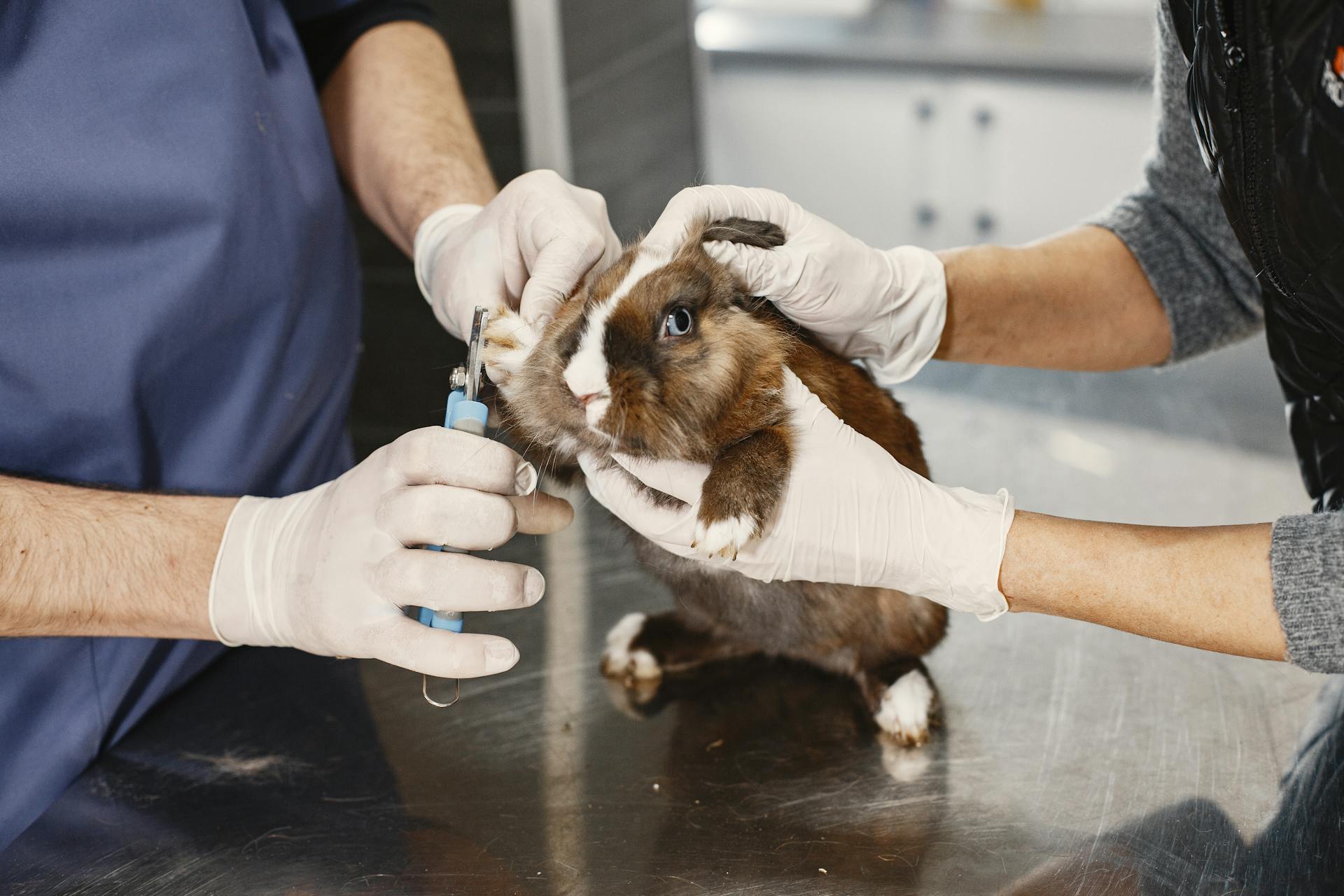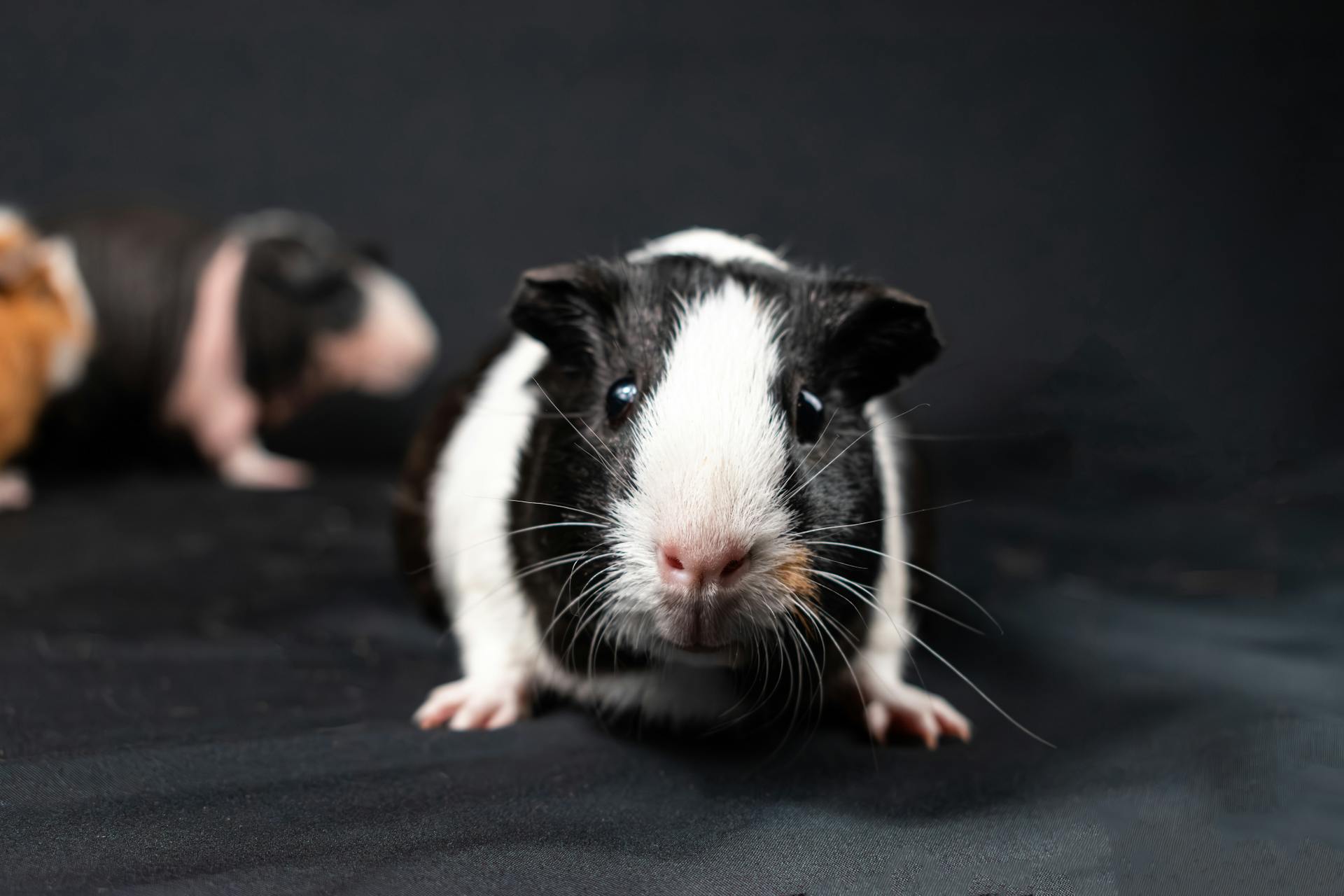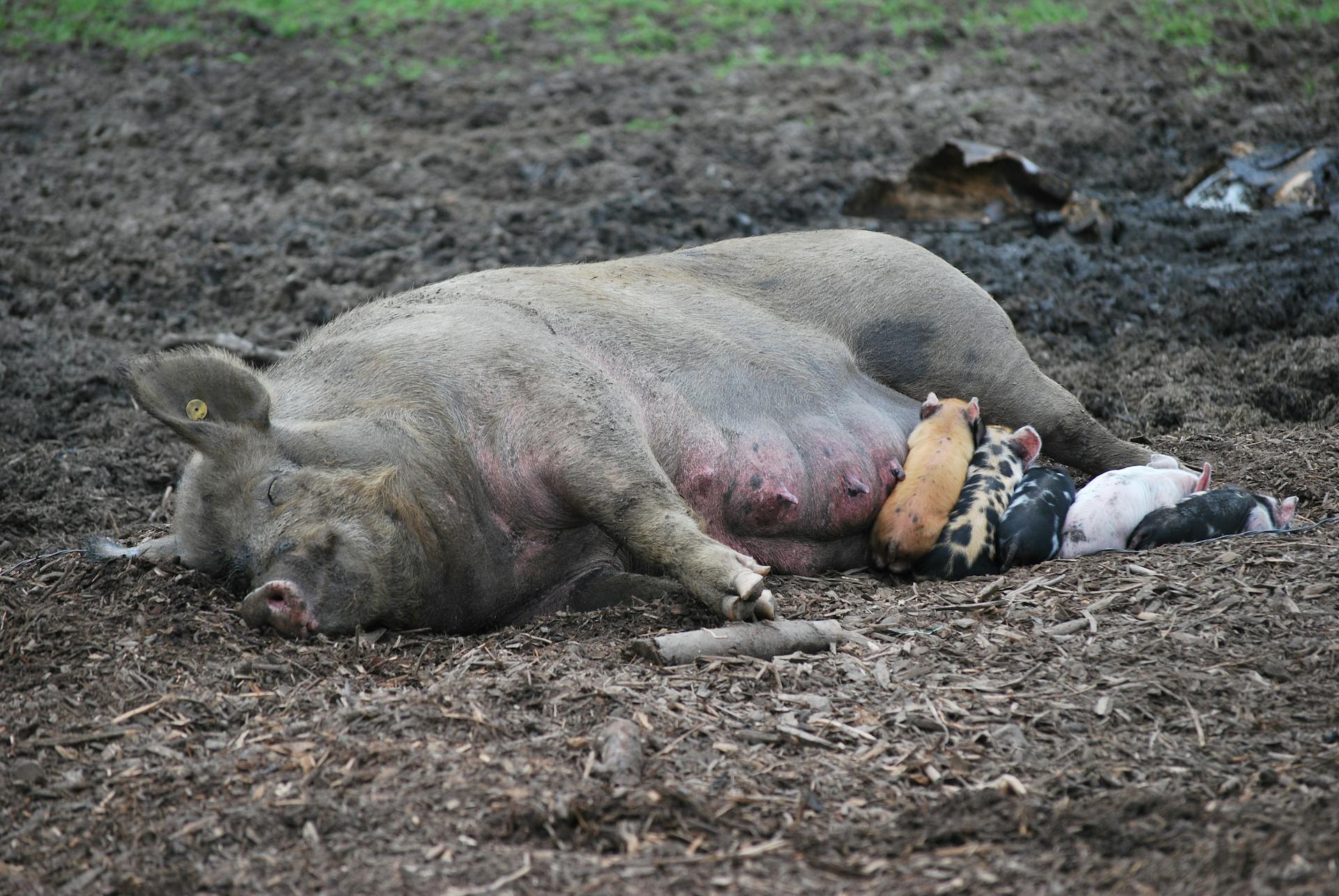
Mammary tumors in guinea pigs are a serious health issue that can affect the lives of these adorable pets.
Guinea pigs are prone to developing mammary tumors, and the risk increases with age, with most cases occurring in guinea pigs over the age of 5.
Some guinea pigs may be more susceptible to mammary tumors due to genetic factors, with certain breeds being more prone to this condition.
Mammary tumors in guinea pigs can be benign or malignant, with benign tumors being more common.
You might enjoy: Are Goldendoodles Prone to Cancer
Tumors and Cancers in Guinea Pigs
Tumors in guinea pigs are relatively uncommon, but they can appear as early as four months of age. It's more common for tumors to appear after age three, with about 30% of older guinea pigs developing tumors.
The most common sites for tumors in guinea pigs include their lungs, skin, mammary glands, ovaries, uterus, and blood/lymphatic systems. Intestinal, bladder, bone, muscle, adrenal gland, and liver tumors are rare.
You might enjoy: Canine Brain Cancer Symptoms
Skin and mammary tumors are the most common types of tumors in guinea pigs. Most skin tumors are benign, but most mammary tumors are malignant in both male and female guinea pigs.
Benign skin tumors called trichofolliculomas are associated with hair follicles and commonly occur in guinea pigs at the base of the tail. These can be removed surgically.
One-fourth of tumors in guinea pigs affect the reproductive tract, with most of these tumors occurring in the ovaries or uterus. Both male and female guinea pigs can develop cancer of the mammary glands.
Here are some common signs of tumors in guinea pigs:
- Raised, rounded lumps on the body
- Discoloration, bleeding or oozing, or hair loss on the lump
- Unusual characteristics of the lump, such as a change in size or texture
- Signs of sickness, such as lethargy or loss of appetite
- Enlarged lymph nodes, liver, or spleen
Treatment of Tumors and Cancers in Guinea Pigs
Mammary tumors in guinea pigs are a serious concern, but there is hope for treatment. Surgery is often the most common treatment for removing tumors, especially if they are malignant.
Most mammary tumors in guinea pigs are malignant, regardless of the pet's sex. This means that prompt veterinary attention is crucial to prevent the tumor from spreading.
Curious to learn more? Check out: Types of Dog Tumors Benign
Chemotherapy and radiation might also be recommended if the tumor is malignant. These treatments can help slow down the growth of the tumor and improve the guinea pig's quality of life.
Palliative care becomes the focus if the tumor is in an advanced stage or if the guinea pig's quality of life is poor. This means keeping your guinea pig comfortable and pain-free for as long as possible.
Any mass or tumor should be brought to the attention of your veterinarian as soon as possible. Early detection can make a big difference in the treatment options available.
Surgical removal is often curative, especially for benign tumors. However, malignant tumors may require a combination of treatments to manage the condition.
Trichoepithelioma, a benign tumor of abnormal hair follicles, is very common in adult guinea pigs. This type of tumor can be removed surgically, which is often curative.
In many cases, surgical removal is the best option for treating tumors in guinea pigs. However, the type of tumor and its location will determine the best course of treatment.
Broaden your view: Mammary Tumor Removal Dog Cost
Examining Guinea Pig Health
Tumors in guinea pigs are relatively uncommon, but they can appear as early as four months of age. Among older guinea pigs, it's estimated about 30% will develop tumors.
To check your guinea pig for tumors, start by taking it out of its cage and looking over its body for any raised, rounded lumps. Use your fingers to brush through its fur to feel for any abnormal growths on its skin.
The most common sites for tumors in guinea pigs include their lungs, skin, mammary glands, ovaries, uterus, and blood/lymphatic systems. Intestinal, bladder, bone, muscle, adrenal gland, and liver tumors are rare.
To evaluate any lumps you find, use a ruler to measure the size of the tumor and identify any unusual characteristics, such as discoloration, bleeding or oozing, or hair loss. These details can all help your vet make a diagnosis.
Some tumors cannot be seen or felt from the outside of the body, so keep an eye out for signs of sickness, such as weight loss, lethargy, or changes in appetite.
Regular check-ups are essential, as tumors can grow quickly and your guinea pig might hide its symptoms at first. Check your guinea pig for lumps at least once a week, and get it checked out by your vet if you notice a new growth.
Curious to learn more? Check out: Pitbull Dog Body
Frequently Asked Questions
How long can a guinea pig live with a tumor?
Guinea pigs with benign tumors can live a normal life after removal, while those with serious tumors like lymphoma typically have a short survival time of 2-3 weeks
Do mammary tumors spread?
Yes, malignant mammary tumors can spread to other parts of the body, including lymph nodes and internal organs. Further testing is often needed to determine the extent of the spread.
Sources
- https://pubmed.ncbi.nlm.nih.gov/20106793/
- https://www.petmd.com/exotic/conditions/skin/c_ex_gp_cancers_tumors
- https://vcahospitals.com/know-your-pet/guinea-pigs-problems
- https://www.merckvetmanual.com/all-other-pets/guinea-pigs/disorders-and-diseases-of-guinea-pigs
- https://www.wikihow.com/Diagnose-and-Treat-Tumors-in-Guinea-Pigs
Featured Images: pexels.com


